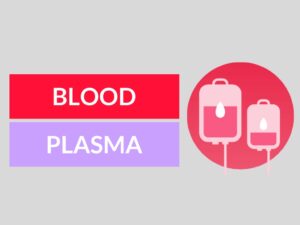What is the Difference Between Plasma and Serum?
Plasma and serum are two important components of blood that play vital roles in various biological processes. Understanding the difference between these two components is crucial for medical professionals and researchers. In this article, we will explore what plasma and serum are, their uses, and highlight some key differences between them.
What is Plasma?
Plasma is the liquid component of blood that remains after cells, platelets, and other solids are removed. It constitutes about 55% of total blood volume and is mostly composed of water, electrolytes, proteins, hormones, waste products, and nutrients. Plasma plays a significant role in transporting nutrients, hormones, and waste products throughout the body.
Examples of Plasma:
- Fibrinogen
- Globulins
- Albumin
Uses of Plasma:
Plasma is used in several medical procedures, including transfusions to replace blood loss, in the manufacturing of various medications, and in research to study disease markers and drug levels.
What is Serum?
Serum is the liquid component of blood that remains after coagulation and removal of clotting factors. Unlike plasma, it does not contain fibrinogen, the protein responsible for clotting. Serum retains all other components of plasma except for clotting factors. It is a clear, yellowish fluid that contains electrolytes, antibodies, hormones, and other proteins.
Examples of Serum:
- Immunoglobulins
- Enzymes
- Antibodies
Uses of Serum:
Serum is widely used in diagnostic testing, such as measuring hormone levels, detecting specific antibodies, and determining various diseases. It is also used in research to study biomarkers and conduct serologic tests.
Differences Between Plasma and Serum
| Difference Area | Plasma | Serum |
|---|---|---|
| Clotting Factors | Contains clotting factors | Does not contain clotting factors |
| Collection Process | Collected using anticoagulants | Collected without anticoagulants |
| Coagulation | May clot after some time | Does not clot |
| Color | Yellowish | Clear |
| Protein Composition | Contains fibrinogen and other clotting proteins | Lacks fibrinogen and clotting proteins |
| Usage in Research | Used for studying drug levels and disease markers | Used for serologic tests and studying biomarkers |
| Usage in Diagnostics | Not commonly used for diagnostics | Commonly used for diagnostic tests |
| Use in Transfusions | Can be transfused as fresh frozen plasma (FFP) | Not used for transfusions |
| Stability | Less stable and requires careful storage | More stable and can be stored for longer periods |
| Applications | Used in clinical and research settings | Primarily used in diagnostic and research settings |
Conclusion:
In summary, plasma and serum have distinct differences in terms of clotting factors, collection process, color, protein composition, usage in research and diagnostics, stability, and applications. Understanding these differences is crucial for various medical procedures and research purposes.
Knowledge Check:
- True or False: Plasma contains clotting factors.
- True or False: Serum can be used for transfusions.
- What is the primary difference between plasma and serum?
Answer: True
Answer: False
Answer: Plasma contains clotting factors, while serum does not.
…


